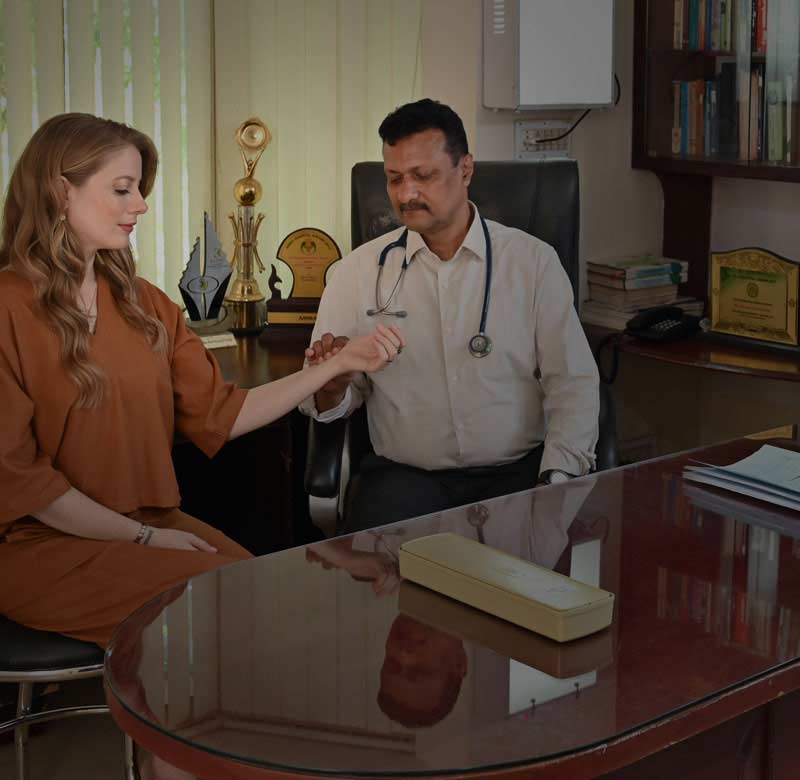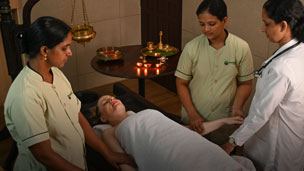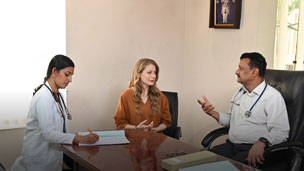







For authentic & scientific
ayurveda
Nagarjuna has developed speciality protocols
and adopted integrated and holistic approaches “to improve
the quality of life of ailing population”.
Lumbar (Back Pain)
Low back pain, a prevalent and distressing condition, primarily affects the lower portion of the spine known as the lumbar region. It is often the result of various injuries, such as muscle strains or ligament sprains, which can cause significant discomfort and limitations in daily activities. Numerous factors can contribute to the development of low back pain, including improper lifting techniques, sustained poor posture, inadequate physical exercise, fractures, ruptured discs, and arthritis.
Improper lifting techniques, such as using incorrect body mechanics or attempting to lift objects that are too heavy, can strain the muscles or ligaments in the lower back. This strain can lead to inflammation, muscle spasms, and pain. Similarly, a sprain can occur when the ligaments, which connect bones and provide stability to the spine, are stretched or torn due to sudden movements or excessive stress on the lower back.
Poor posture, whether during prolonged sitting or standing, places excessive stress on the spine and its supporting structures. Slouching, hunching over a desk, or maintaining an unnatural spinal curvature can lead to muscular imbalances, joint dysfunction, and ultimately, low back pain.
A sedentary lifestyle or lack of regular exercise can contribute to weakened muscles and poor flexibility in the lower back. This can increase the risk of injuries and strain on the spinal structures, as well as impair the spine's ability to absorb shock and maintain stability.
Fractures in the vertebrae, which can result from traumatic incidents like falls or accidents, can cause severe back pain. These fractures can destabilize the spine and potentially damage the spinal cord, requiring immediate medical attention.
A ruptured or herniated disc occurs when the soft, gel-like material inside a spinal disc protrudes through a weak spot in the disc's outer layer. This can irritate nearby nerves and result in localized or radiating pain in the lower back and legs. Disc herniation can be caused by degenerative changes in the spine, repetitive stress, or acute injuries.
Arthritis, specifically osteoarthritis or degenerative joint disease, can affect the spine and lead to low back pain. Over time, the cartilage that cushions the joints in the spine can wear down, causing friction, inflammation, and discomfort.
In conclusion, low back pain is a common and often painful condition that affects the lumbar region of the spine. It can be caused by a variety of factors, including muscle strains, ligament sprains, improper lifting, poor posture, lack of regular exercise, fractures, ruptured discs, and arthritis. Understanding the underlying causes of low back pain can help individuals take appropriate measures to prevent and manage this condition effectively. It is advisable to seek medical evaluation and guidance for accurate diagnosis and treatment of low back pain.
Please fill up the form to get in touch with us, or contact us for any queries





Terms of use | Privacy Policy | Contact us
Copyright © 2025. All Rights Reserved
Designed & Developed by Websoul Techserve








